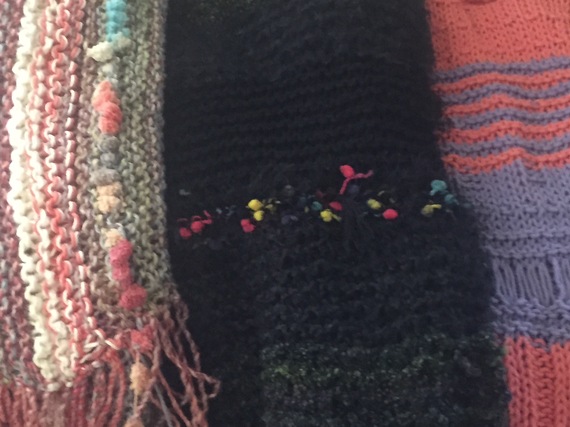When Pope Francis spoke in front of Congress this past week, he urged those of us who live in the U.S. to "break out" of our "cycle of paralysis" and use our power to heal. That message resonated strongly with me and brought back memories of a tragedy that befell a very close friend of mine. That tragedy propelled me out of my silo of self-absorption. The story is as follows:
When my son hears the news by text, he drops his phone in disbelief.
When my mom hears the news from a casual acquaintance, sobs burst forth from her throat.
When I hear the news by phone from my son, I collapse in a heap on the floor and begin to weep.
What do you do when the unthinkable happens to a close friend? When one of the things most feared by all comes true? A loss - especially a sudden one - brings on feelings of incredulity and disorientation in all who know and care for the persons involved in a tragic occurrence.
How do we respond to such raw need? We attend the funeral. Visit the home to console and commiserate. Bring a casserole. Send a donation. And we ponder over what else we can do to ease the burden: How much is too intrusive? How much is too little? How much is just right?
These are questions I am grappling with in the weeks following the accident - an accident that took the life of my friend's adult son - leaving a grieving widow and two small children. Leaving stunned parents, siblings, friends and business associates.
Gretchen Rubin, author of The Happiness Project, says that creating something is one of the most delightful ways to enhance happiness. I feel creating something is also intuitively comforting to both the giver and to the receiver. Especially in cases of tragic loss.
In the wake of her devastating, inconsolable loss, I mail my friend a book on grieving though my gut tells me it is way too soon for her to concentrate. I think about baking her brownies and sending them air express, but know she has no appetite. I am too far away to pay her and her husband an afternoon visit and hug them both tightly. I am stumped. What more can I do?
I drive to my neighborhood bookstore to get my mind off my dilemma. I sit cross-legged in front of shelves overflowing with craft projects. My fingers fly restlessly over the book jackets.
Desultorily, I pull a few books off the shelf and stack them beside me. Frustrated that my perusing is not yet proving productive, I pause to draw a steadying breath. And then a soft cover book with earthy colors catches my attention: The Prayer Shawl Companion. I lift it off the shelf, open it wide in my lap and eagerly begin to flip through its pages.
One sentence in the book's introduction grabs my attention: Prayer shawls become tangible symbols of love when words can't be found to adequately express one's feelings.
The book profiles nursing shawls. Baptism shawls. Traveling shawls. Mexican rainbow shawls. And Tallit - Jewish prayer shawl.
When our world unravels, knitting and gifting a shawl connotes hope for better days. It symbolizes an enveloping circle of compassion. Lovingly crocheted or knitted, the shawl drapes around the shoulders of someone in need of comfort. It wraps them in an embrace. As the authors say, giving and receiving a shawl opens the doors of communication, reinforces relationships, and invites understanding and healing.
I'd like to re-wind the clock so that my friend's son doesn't climb up a ladder to inspect a roof for disputed damage. I'd like to re-wind the clock so he doesn't plunge through a skylight, falling 20 feetto his death. But time relentlessly marches forward, not backward, and I can't re-write history.
I buy the book. I pick out a pattern. I head for the knitting shop and purchase three skeins of yarn in a soft aqua color. I pick up my needles and cast on. Knit a row. Purl a row. Knit a row. Purl a row. The familiar rhythm lulls me into a calm state of mind. I hope that, when finished, my shawl will provide my friend with a sense of calmness too. I hope that, when finished, my shawl will provide my friend with a private place to escape to - a place to take stock, be soothed, find solace, and begin to mend and revive. It's not perfect, but it's a start.
Since that time, unfortunately, other friends have suffered unspeakable losses too - from illness, from accident, from simply being in the path of the ravages of life itself. An accumulated pile of my shawls is always on hand. In many shapes. In many colors. In many patterns. And I keep my needles and yarn close by - busily replenishing the pile.
When the need arises, I select a shawl, wrap it up, attach the above column - supplemented with a personal note - and send the whole entire package to a friend. It's a perpetual, lasting hug in a time of need. To date, all of my shawls have been knitted with love and all of my shawls have been accepted with appreciation.
Want more "Iris"? Sign up for her weekly newsletter at www.irisruthpastor.com
Earlier on Huff/Post50:
